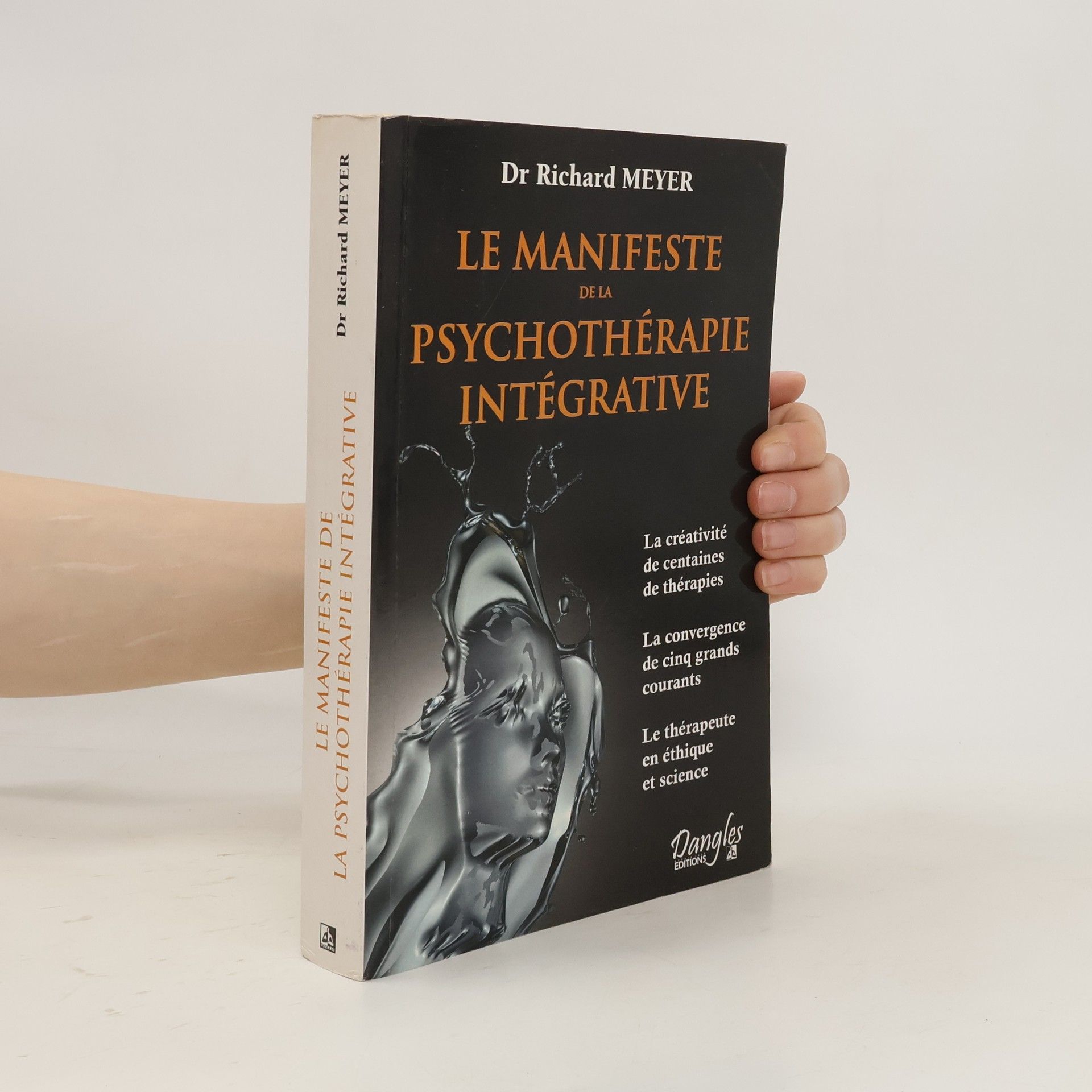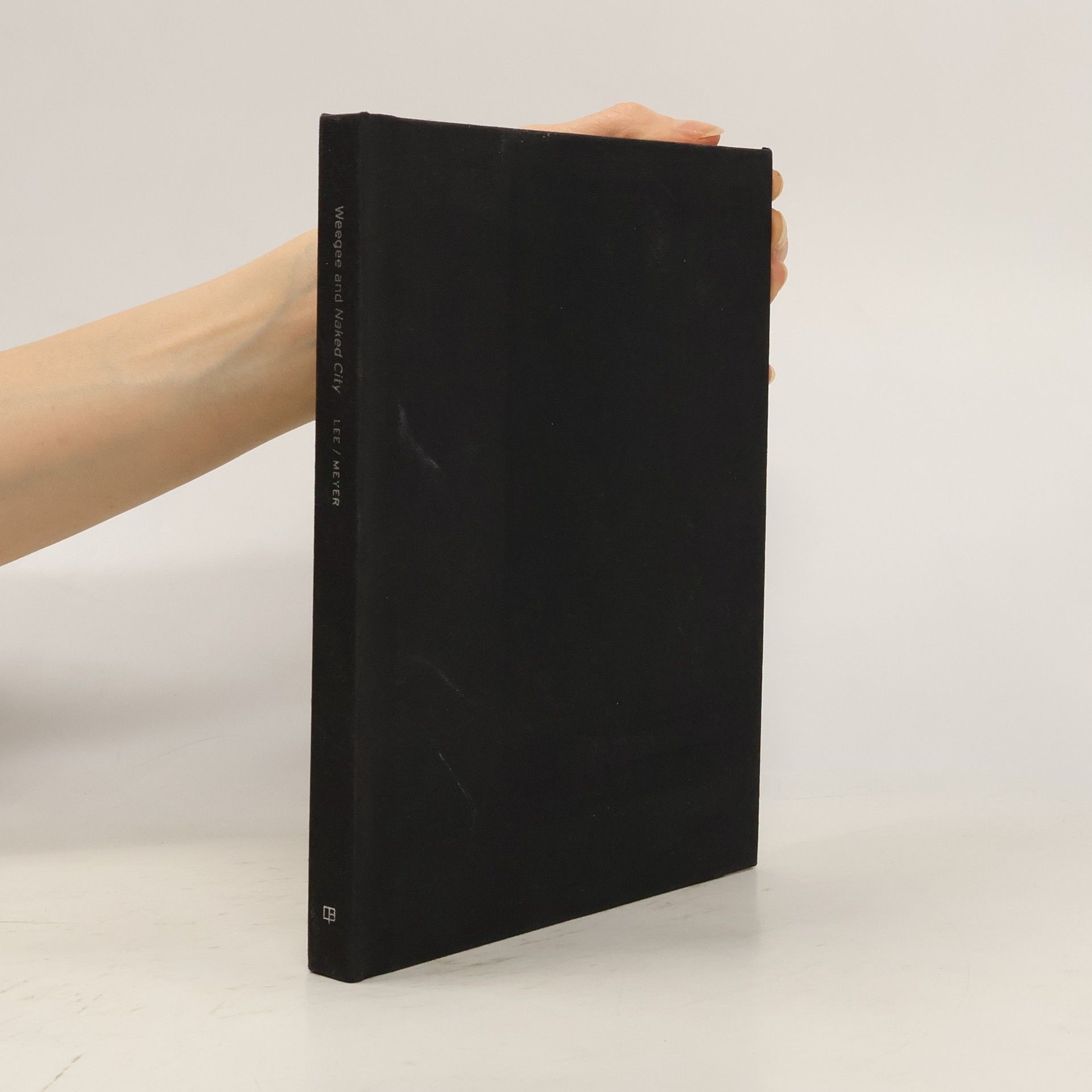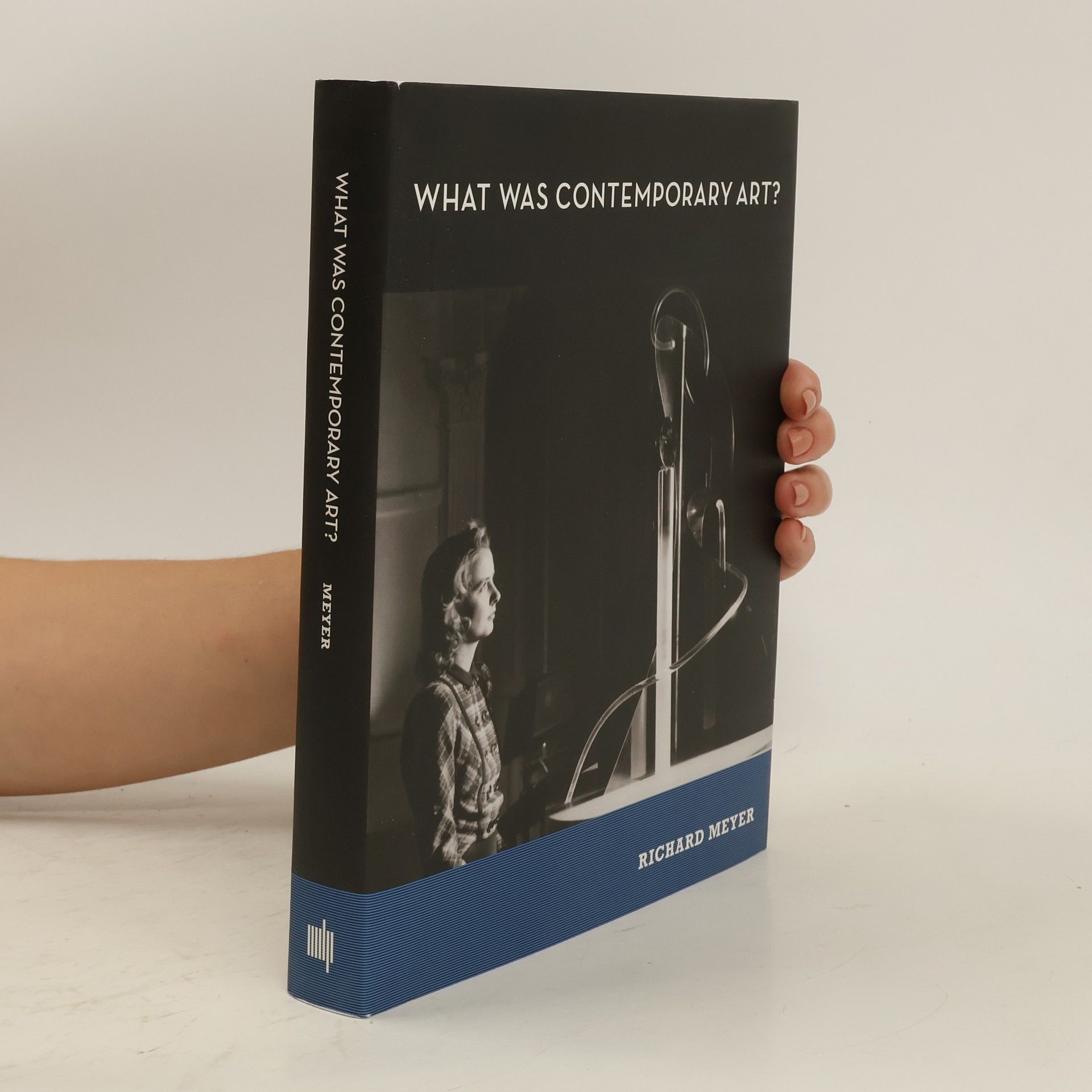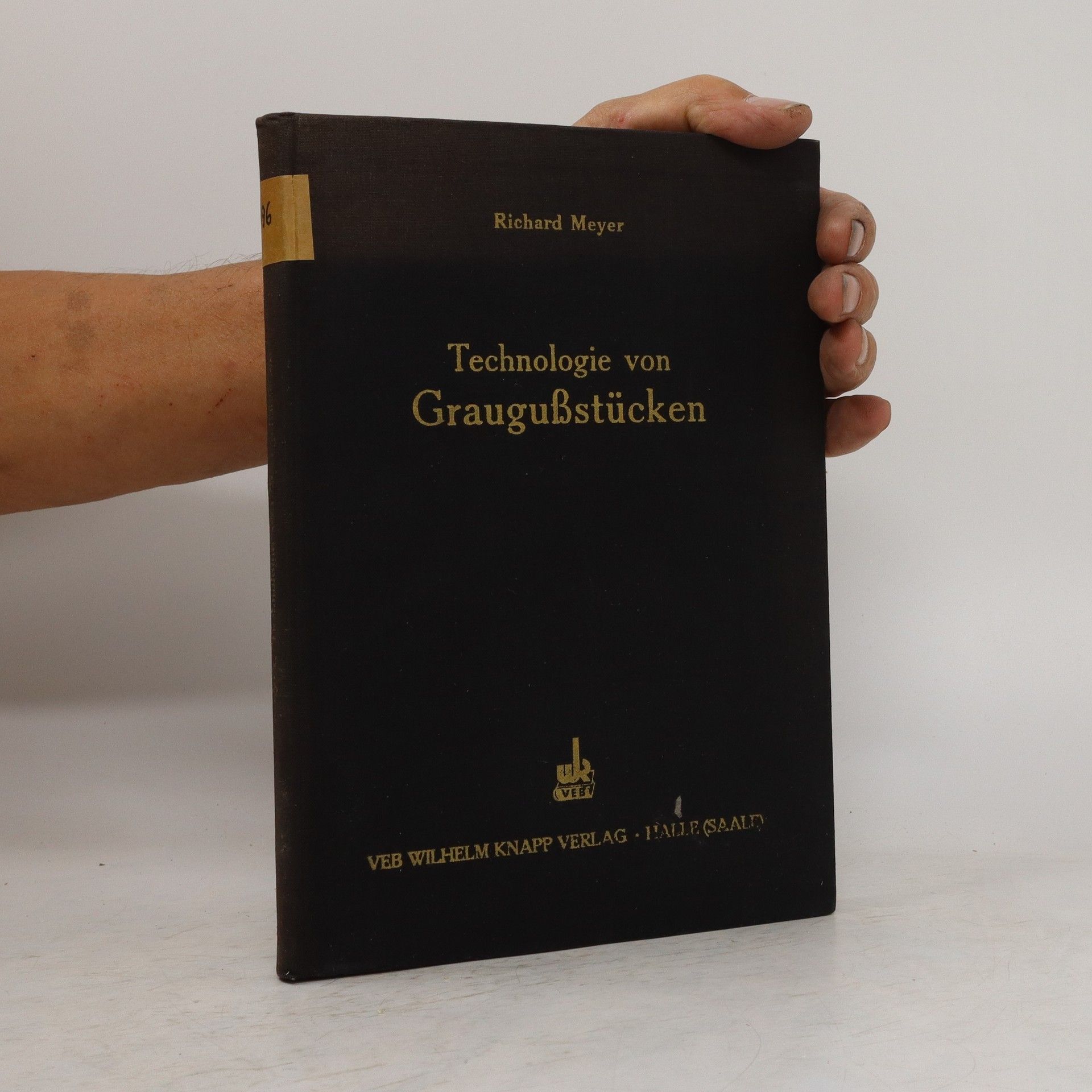The narrative explores the remarkable journey of Morris Hirshfield, an immigrant who arrived in the US in the 1890s. Initially finding success as a tailor and shoe designer, he later emerged as a celebrated self-taught artist, gaining admiration from surrealists. The account highlights his unique contributions to art and the transformative experiences that shaped his creative vision.
Richard Meyer Book order
Richard Meyer is a poet whose work explores the intricacies of human experience, often with a reflective and emergent voice. Having dedicated decades to teaching, he later channeled his passion into poetry, focusing on themes that resonate with depth and observation. His poems, recognized for their quality and artistry, delve into the human condition with a mature perspective. Meyer's emergence as a significant poet late in his career offers a unique lens on life and art.






- 2022
- 2013
What was Contemporary Art?
- 361 pages
- 13 hours of reading
"Contemporary art in the early twenty-first century is often discussed as though it were a radically new phenomenon unmoored from history. Yet all works of art were once contemporary to the artist and culture that produced them. In What Was Contemporary Art? Richard Meyer reclaims the contemporary from historical amnesia, exploring episodes in the study, exhibition, and reception of early twentieth-century art and visual culture. Meyer analyzes an undergraduate course taught by Alfred Barr at Wellesley College in 1927 as a key moment in the introduction of works by living artists into the discipline of art history, then turns to a series of exhibitions from the 1930s that put contemporary art in dialogue with premodern works ranging from prehistoric cave pictures to Italian Renaissance paintings. Meyer also treats the controversy that arose in 1948 over the decision by Boston's Institute of Modern Art to change its name to the Institute of Contemporary Art. By retrieving moments in the history of once-current art, Meyer redefines "the contemporary" as a condition of being alive to and alongside other moments, artists, and objects. A generous selection of images, many in color -- from works of fine art to museum brochures and magazine covers -- support and extend Meyer's narrative. These works were contemporary to their own moment. Now, in Meyer's account, they become contemporary to ours as well."
- 2013
Art & Queer Culture
- 304 pages
- 11 hours of reading
A revised, updated edition of the acclaimed historical overview of Queer art - available for the first time in paperback
- 2010
Le manifeste de la psychothérapie intégrative
la créativité de centaines de thérapies, la convergence de cinq grands courants, le thérapeute en éthique et science
- 536 pages
- 19 hours of reading
Il y a des centaines de psychothérapies et psychanalyses, ainsi qu’une dizaine de théories solides, qu’on ne voit plus aujourd’hui comme adversaires mais complémentaires. Une bonne centaine de méthodes sont abordées ici, dont certaines longuement : psychanalyses freudienne, reichienne et jungienne, somatanalyse, EMDR, constellations, communication non violente, toucher thérapeutique, présence Juste, groupe et couple… Broché - 16 x 24 - 536 pages
- 2008
Defining Moments in American Photography: Weegee and Naked City
- 144 pages
- 6 hours of reading
Arthur Fellig, better known as Weegee, and his 1945 photography book, Naked City —with its lurid tabloid-style images of Manhattan crime, crowds, and boisterous nightlife—changed prevailing journalistic practices almost overnight. In this volume, two art historians, Anthony W. Lee and Richard Meyer, bring markedly different outlooks on photography and modernism to their discussions of Weegee and his book. Meyer looks carefully at Weegee's pictures before and after they were collected and assesses how his practice of tabloid photography was inseparable from his own lowbrow appeal. Lee paints the vivid details of a leftist journalism world in 1930s and 1940s New York and shows how this world helped shape the photographer's vision. These essays restore the Naked City photographs to the mass circulation newspapers and magazines for which they were intended, and they trace the strange process by which the most famous of these pictures—suffused with blood, gore, and sensational crime—entered the museum.
- 2003
Fluid dynamics, the behavior of liquids and gases, is a field of broad impact — in physics, engineering, oceanography, and meteorology for example — yet full understanding demands fluency in higher mathematics, the only language fluid dynamics speaks. Dr. Richard Meyer's work is indeed introductory, while written for advanced undergraduate and graduate students in applied mathematics, engineering, and the physical sciences. A knowledge of calculus and vector analysis is presupposed.The author develops basic concepts from a semi-axiomatic foundation, noting that "for mathematics students such a treatment helps to dispel the all too common impression that the whole subject is built on a quicksand of assorted intuitions." Contents include:Kinematics: Lagrangian and Eulerian descriptions, Circulation and Vorticity.Momentum Principle and Ideal Fluid: Conservation examples, Euler equations, D'Alembert's and Kelvin's theorems.Newtonian Fluid: Constitutive and Kinetic theories, exact solutions.Fluids of Small Viscosity: Singular Perturbation, Boundary Layers.Some Aspects of Rotating Fluids: Rossby number, Ekman layer, Taylor-Proudman Blocking.Some Effects of Compressibility: Thermodynamics, Waves, Shock relations and structure, Navier-Stokes equations.Dr. Meyer writes, "This core of our knowledge concerns the relation between inviscid and viscous fluids, and the bulk of this book is devoted to a discussion of that relation."
- 1925
Dieser Buchtitel ist Teil des Digitalisierungsprojekts Springer Book Archives mit Publikationen, die seit den Anfängen des Verlags von 1842 erschienen sind. Der Verlag stellt mit diesem Archiv Quellen für die historische wie auch die disziplingeschichtliche Forschung zur Verfügung, die jeweils im historischen Kontext betrachtet werden müssen. Dieser Titel erschien in der Zeit vor 1945 und wird daher in seiner zeittypischen politisch-ideologischen Ausrichtung vom Verlag nicht beworben.
